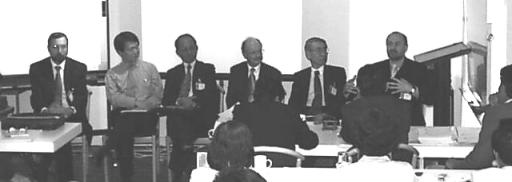International safeguards should be
understood as a mechanism which allows a State Party to a safeguards agreement
to work with the IAEA to assure the States neighbours, and the international
community generally, that it is in compliance with its non-proliferation
commitments. This is an important
international confidence building measure and so directly benefits the
inspected State.
Because of these benefits Australias
overseas development aid program funded a regional training course on national
safeguards systems in April 2000. This
activity meshed well with Australias broader non-proliferation
objectives. In addition to its
international commitments, each State must exercise effective control over
nuclear material for domestic reasons.
The national infrastructure required for effective and efficient IAEA
safeguards is essentially the same as that needed to exercise effective
national control of nuclear material and is commonly known as the State System
of Accounting for and Control of Nuclear Material (SSAC).
In 1985 Japan and Australia reached an
informal understanding with the IAEA that they would offer regional courses
(for participants from the IAEAs Far East and Southeast Asia and Pacific
Regions) in alternate years, or as required by the Agency. Since then Japan has hosted regional courses
in 1985, 1987, 1991 and 1995 and Australia has hosted courses in 1986, 1989 and
1994, and now most recently in March/April 2000.
Under long-standing arrangements for the
conduct of these courses, the host country provides airfares to and from the
course location, accommodation and a subsistence allowance for participants
from developing countries, for IAEA lecturers, and for Guest Lecturers (senior
officers of national and regional safeguards systems within the region and
beyond). The host also provides
training facilities, including classrooms, a laboratory for nuclear materials
measurement practicals, and access to a real nuclear facility (the HIFAR
reactor in our case) for other exercises.
Lecturers and exercise coordinators from the host country make a
substantial contribution.
ASNO obtained funding of about $250,000
from the Australian Agency for International Development (AusAID). ASNO also entered into an arrangement with
ANSTOunder which the first half of the course
would be conducted at ANSTOs training facilities at Lucas Heights. The course syllabus was designed
collaboratively by ASNO and the IAEA Section for Safeguards Training. ASNO included several new elements, mainly
covering strengthened safeguards and the Additional Protocol, but also some
items that the IAEA had found useful in similar courses in other countries.
The course was conducted from 27 March to
14 April 2000, the first half at Lucas Heights and the second half in
Canberra. Participants came from
several regional countries: one from Cambodia, two from China, three from
Indonesia, one from Japan, two from the Republic of Korea, two from Malaysia,
one from the Philippines, one from Thailand and two from Vietnam (participants
from industrialised countries were self-funded). There were six students from Australia.
Panel discussion at the regional training course. (left to
rightDr Marzo, ABACC, Mr Kim, TCNC, Dr Ridwan, BAPETEN,
Mr Carlson, ASNO, Mr Kurihara, NMCC and Mr Nackaerts, Euratom Safeguards
Office)
In addition, Australia
invited two participants from the Democratic Peoples Republic of Korea
(DPRK). Since the DPRK is not a member
of the IAEA, their representatives were formally observers, although they
received exactly the same training as everybody else. So we had 23 participants from eleven countries. Lecturers came from ABACC (the
Brazilian/Argentine Safeguards Agency), Euratom, Indonesia, Japan (2), the
Republic of Korea, the IAEA (5), and Australia (11from ASNO, ANSTO, CSIRO
Energy Technology and DFATs Nuclear Policy Branch).
Both the participants and the IAEA
acknowledged the course as very successful.
Specifically, Dr Pierre Goldschmidt, the IAEA's Deputy Director
General for Safeguards, wrote in a letter thanking ASNO for its efforts, the
course was organised in a highly professional manner and was truly successful.
Return to the ASNO Annual
Report Index | The Nuclear IndustrySome Current Issues

